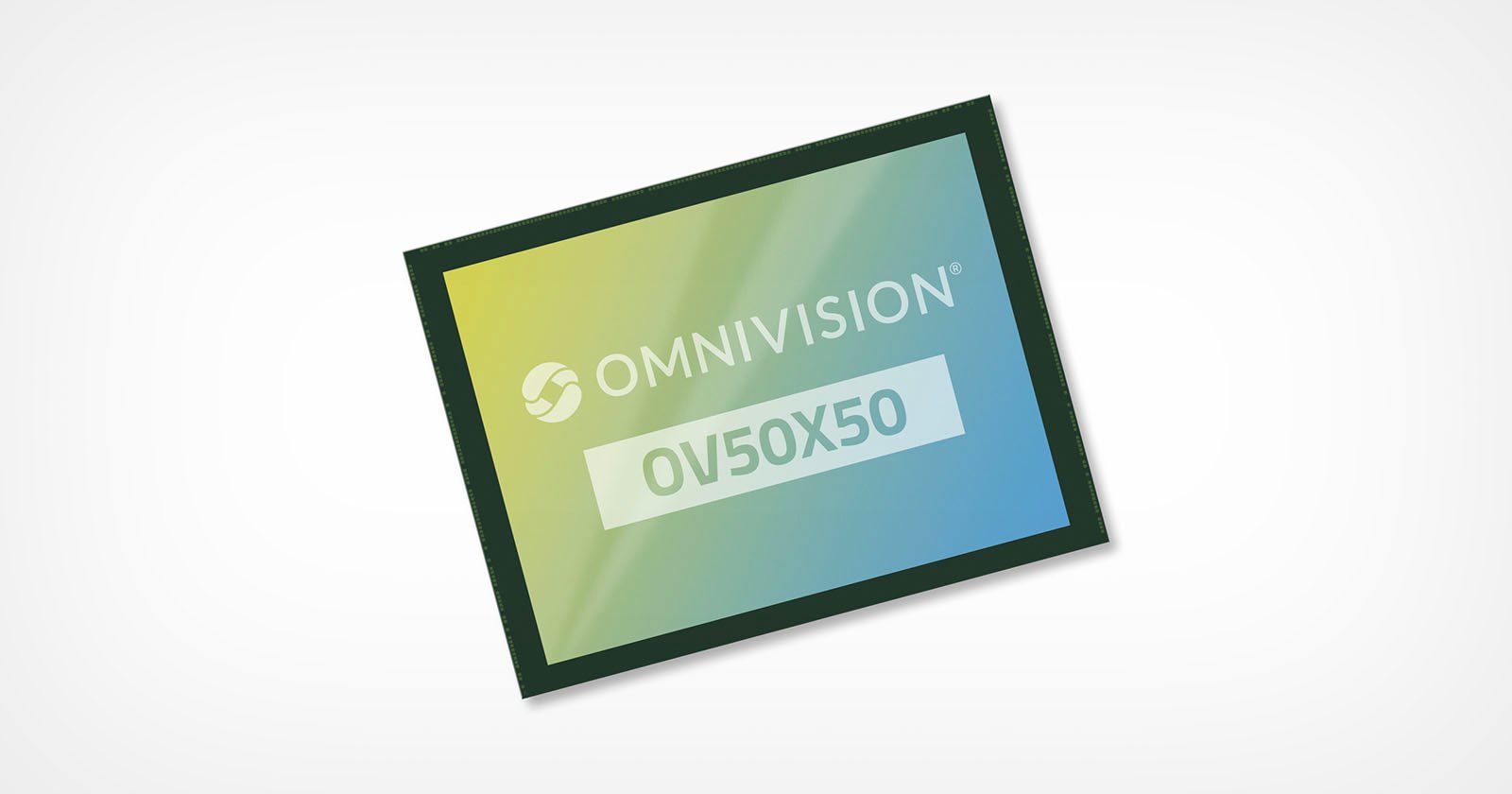OmniVision’s New Smartphone Sensor Promises the Industry’s ‘Highest Dynamic Range’

Image sensor maker OmniVision announced a new Type-1 image sensor for flagship-grade smartphones. The image sensor promises improved video performance and “the mobile phone industry’s highest dynamic range.”
The new OV50X image sensor, as reported by Digital Camera World, promises an industry-leading “close to” 110 decibels of dynamic range.
“Smartphones are used in the majority of video and photo capture today, and cinematic-quality video recording has become a highly demanded feature among consumers for flagship mobile phones,” says Takuritsu Li, OmniVision marketing manager.
“Our OV50X image sensor was designed with the professional videographer and photographer in mind, featuring a large 1-inch optical format image sensor that provides close to 110 decibels (dB) single-exposure HDR; consumers can now own a smartphone capable of superior video and photo capture around the clock, even in challenging capture conditions such as sunrise, sunset, nighttime with bright lights, or overcast days.”
![]()
It is worth digging deeper into the dynamic range claim of “close to” 110 decibels. It is unusual to refer to photographic dynamic range in terms of decibels rather than stops, but it is generally accepted to be six decibels per stop. That would put the OV50X mobile phone sensor at around 18 stops of dynamic range in a single-image HDR capture format. This is, of course, an extremely lofty claim.
For comparison, the medium-format Phase One IQ4 digital back, with its 150-megapixel image sensor measuring 53.4 by 40 millimeters, promises around 15 stops of dynamic range in optimal conditions at base ISO.
The sensor relies on OmniVision’s TheiaCel Technology, which promises “a new era for single-exposure HDR.” TheiaCel aims to combine OmniVision’s proprietary HDR technology with an image sensor’s lateral overflow integration capacitor (LOFIC) to improve image quality in diverse lighting conditions. Essentially, with LOFIC technology, an image sensor stores excess electronics in a large capacitor within each pixel and then uses this overflow charge to improve the performance of the low-light channel.

Further, smartphones rely much more heavily on advanced image processing than traditional interchangeable lens cameras, as smartphones must overcome the physical limitations of small sensors, tiny pixels, and compact lenses, so it is conceivable that the final processed image from the O50VX will look good and artificially replicate the dynamic range performance of a much larger image sensor in a way sufficient for most people’s use cases.
As part of this “advanced image processing,” the OV50X relies upon OmniVision’s DCG HDR technology.
OmniVision describes: “DGC HDR Technology can extend dynamic range in a single exposure to reproduce motion-artifact-free and ultra low-noise images in challenging lighting conditions. In DCG pixels, photoelectrons from a photodiode are read out twice in different gains: low-conversion gain (LCG) for high light and high-conversion gain (HCG) to capture clear images in low light. In this way, DCG HDR Technology effectively extends the dynamic range to the lower light side.”

Although it is hard to believe OmniVision’s dynamic range claims will ring true in all situations, or deliver real-world image quality that rivals larger image sensors, that does not mean that OmniVision’s new OV50X image sensor won’t deliver excellent dynamic range for a mobile image sensor. It very well could, thanks to its TheiaCel and DGC HDR Technology, and smartphone users will likely find out when devices featuring the sensor begin rolling out later this year.
Aside from the ambitious dynamic range claims, the OV50X’s other specifications are also quite interesting. The image sensor, which measures 13.1 by 9.8 millimeters (nearly 16.4 millimeters diagonally), is reasonably large for a smartphone. For example, the Type-1 sensor is bigger than the main sensor in an iPhone 16 Pro and undeniably bigger than most phone sensors. Given its 1.6-micron pixel pitch at 50 megapixels, it should be capable of capturing sharp, detailed images in good lighting conditions.
To aid with performance in lower light, the sensor supports four-cell pixel binning, which dips the resolution down to 12.5 megapixels. By treating four pixels as one, the phone will effectively improve its light-gathering capabilities and efficiency in challenging conditions, thereby reducing visible noise.
In this pixel-binned mode, the sensor can also capture 12.5-megapixel images at a blazing-fast 180 frames per second (FPS) and shoot three-channel HDR at 60 FPS, meaning it is combining three frames into one to expand the visible dynamic range at high speed.
12.5 megapixels is plenty for 4K video recording, but for 8K, about 35 megapixels are required. In this case, the OV50X instead uses dual analog gain (DAG) HDR and an on-sensor crop zoom, removing the excess pixels from the edges of the frame rather than oversampling.
The sensor also features 100% autofocus coverage thanks to its quad phase detection (QPD) AF technology. The sensor is built on OmniVision’s PureCel Plus-S stacked-die technology, which the company claims improves low-light performance.
The OV50X is sampling now, meaning smartphone manufacturers have access to it for testing and product design purposes. The sensor will be in mass production in Q3 2025 and presumably be in smartphones arriving at retail shortly thereafter. It will be fascinating to see if OmniVision’s new sensor will help the company dent the demand for Sony and Samsung sensors, which are highly prevalent across modern smartphone lineups today.
Image credits: OmniVision
Source link



